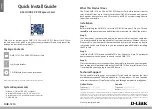
Rastergraf
3-18 Programming On-board Devices
3.7 System Management Devices and Functions
The Eclipse3 Extended Features version boards have devices that are
specifically intended to assist in system management. These include:
•
A National Semiconductor LM75 I
2
C temperature sensor located near
the Borealis chip provides local temperature measurements. You can
obtain the data sheet and collateral information for the LM75 from the
technical document section on the Rastergraf web site;
•
Three LEDs, which can be driven by system software to alert and/or
inform the user. The are controlled by the Borealis Auxiliary Register;
•
A 2 Kb I
2
C Serial EEPROM which can be used by system software to
store data such as serial number and software revision;
In addition, there are features of the Borealis chip that are useful:
•
Power management control registers allow various parts of the chip to
be put powered down without making the chip entirely useless;
•
Signature registers in the RAMDAC can be are used to confirm that a
test pattern in display memory will pass correctly through the Borealis
all the way to the DAC inputs. This is useful as a Built In Self Test
(BIST) function;
•
When the board is properly connected to a monitor and a test image is
displayed on the monitor, a certain level voltage will be developed at
the DAC outputs that drive the monitor. A simple A/D reads the voltage
and confirms that the DAC output is above a certain threshold level;
•
The I
2
C-based DDC2B protocol is used to control the display monitor.
DDC2B is a VESA standard (
frame buffer to read the Additional Display Identification Data (EDID)
from the monitor. The EDID includes resolutions supported, maximum
width and refresh, and sync type .
•
Frequency select bits for the Borealis Drawing Engine and the
programmable Memory Clock PLL allow the system to optimize
operating frequencies for the Borealis as a function of system
temperature.
Please contact Rastergraf for more information if you wish to utilize any
or all of these features.










































